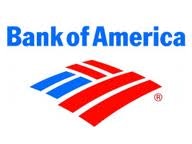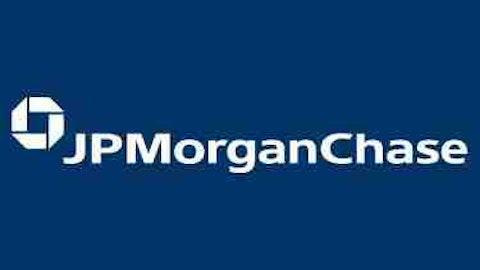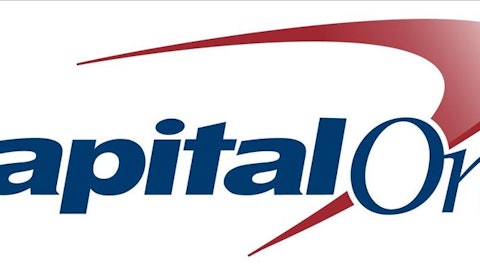Banking stocks have again shown their excellent investment characteristics. As a group, they have risen almost 25% from 2010 and more than doubled since the market low in 2009. Though rewarding, the underlying business details of bank stocks can be difficult to understand. For example, the latest earnings release from JPMorgan Chase & Co. (NYSE:JPM) was a brutal 64 pages of complex numbers and industry jargon.
Luckily, making money from these stocks can be a lot less complicated. Focusing on three fundamental attributes of the industry can help in turning that profit.
1. These companies are built to make money.
Banks have a very lucrative business model. While the details can be very complicated, the basics are pretty simple. They raise money at a low rate, invest it at a higher rate, and after keeping operating costs low, profit from the difference. The most significant distinction for a bank is how it invests. Most of them fit into one of three categories:
Investment Banks
Investment Banks are institutions that invest into transactions relating to corporate high finance. They get involved with advising & funding mergers or acquisitions, stock and bond offerings, and now mostly principal trading & market making.
Goldman Sachs Group, Inc. (NYSE:GS) and Morgan Stanley (NYSE:MS), the last two major U.S. investment banks, generate roughly 60% to 70% of their profits from principal trading and market making. Though this business sounds risky, it is amazingly consistent in earning a profit.
Lending Banks
Lending Banks are institutions that invest their money in loans to commercial or consumer clients. These banks range in size from small local savings institutions to larger regional players with one of the largest being Wells Fargo & Company (NYSE:WFC). Wells generates roughly 52% of its revenue from what is called net interest margin, or the difference between the interest they collect on loans less the cost of what they pay on deposits. They also get another 40% of their revenue from fees collected on servicing loans and deposits.

A 1933 law separated the business of investment banking and general lending. When that law was repealed Investment Banks could begin lending and Lending Banks began getting into mergers, acquisitions and trading. After some big mergers, what I call the Hybrid Banks were created. These banks do both investment banking and lending.
JPMorgan Chase is the biggest with almost $2.4 trillion in assets. It generates about 66% of revenue from lending & fees with most of the rest from investment banking. Other large hybrids include Bank of America Corp (NYSE:BAC) with roughly 71% of their business related to lending and Citigroup Inc. (NYSE:C) where lending accounted for about 70% of their revenues.
2. Occasionally these companies blow up.
As wonderful as their business model is, banks have a tendency to occasionally blow up. When times are good, they often get greedy or stupid and invest poorly. There have been innumerable examples of their bad judgment. A couple of recent headline examples have been JPMorgan’s “London Whale” situation and the industry’s sub-prime mortgage fiasco. Sometimes the blow-ups are large and on an industry wide scale, sometimes on a smaller, individual company scale.
3. When they pay for their errors, they pay big, but late.
When banks finally pay for their bad investments, they usually pay big. Because banks are highly leveraged, meaning they use a lot more borrowed money than shareholder capital, bad choices can translate into large losses per share. For example, the relatively minor “London Whale” total loss could shave about $1.84 off of JPMorgan’s pre-tax earnings per share.
Though the losses may be large, the good news is that they are also late. The bad investments are typically made quarters or even years before the loss is reported. Usually by the time investors hear about it, the bank has recognized their folly and stopped investing in that area.
Given these industry characteristics, there is an investing strategy that works pretty well with the banks:
First, find a reasonable fair value for the company. There are many methods of estimating a bank’s fair value. Capitalized “normalized” earnings or percentage-of-tangible book value are a couple of the most popular.
Second, wait for a blow up. Eventually a misstep will be reported and the share price will suffer. I’m currently watching for a possible downside to the recent mortgage refinance boom. The huge number of refi’s over the last few years has boosted fee income at many banks. Any slowdown in this business might result in a missed quarter and an inviting stock price decline.
Third, check out the cause of the ‘blow up.” It’s very important to determine if the bank’s mistake could be fatal. Because they operate on a small amount of shareholder capital, usually around 10% of assets, a serious problem could threaten the firm’s existence. Though it doesn’t happen often, banks have gone out of business when they’ve made a significant blunder.
Fourth, look to invest. If it’s determined that the blow up isn’t going to be fatal and if there is a decent margin-of-safety spread between fair value and market price, it’s usually worth considering for investment.
While there’s certainly more to investing in banks than what’s been summarized here, history has shown they have some great characteristics that make them an excellent area for consideration and study.
The article The Profitable Characteristics of Bank Stocks originally appeared on Fool.com and is written by Bob Chandler.
Copyright © 1995 – 2013 The Motley Fool, LLC. All rights reserved. The Motley Fool has a disclosure policy.




